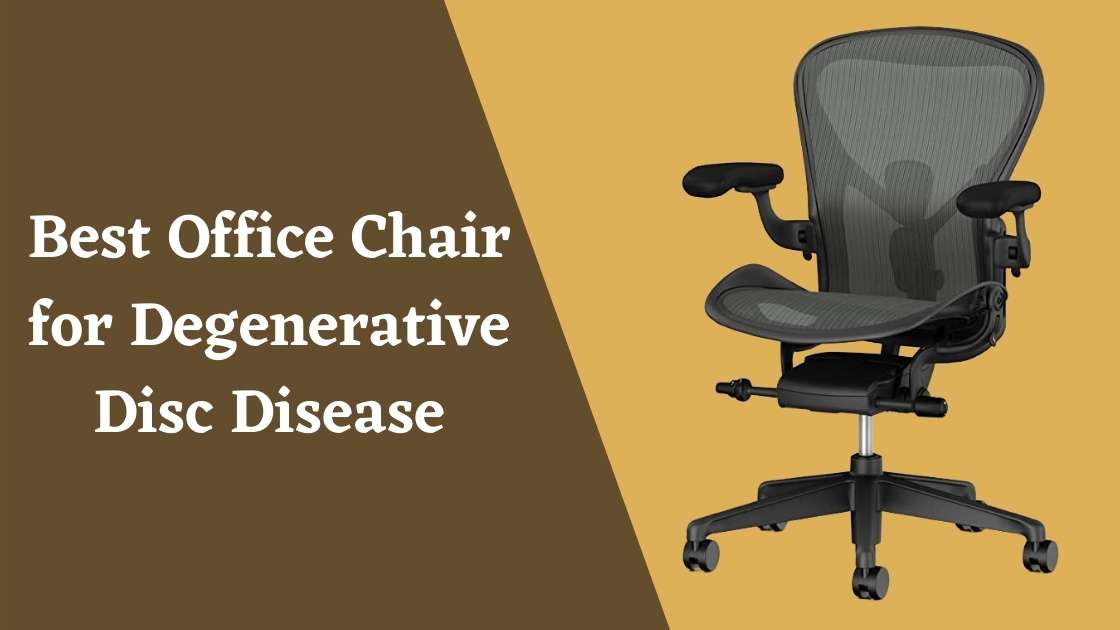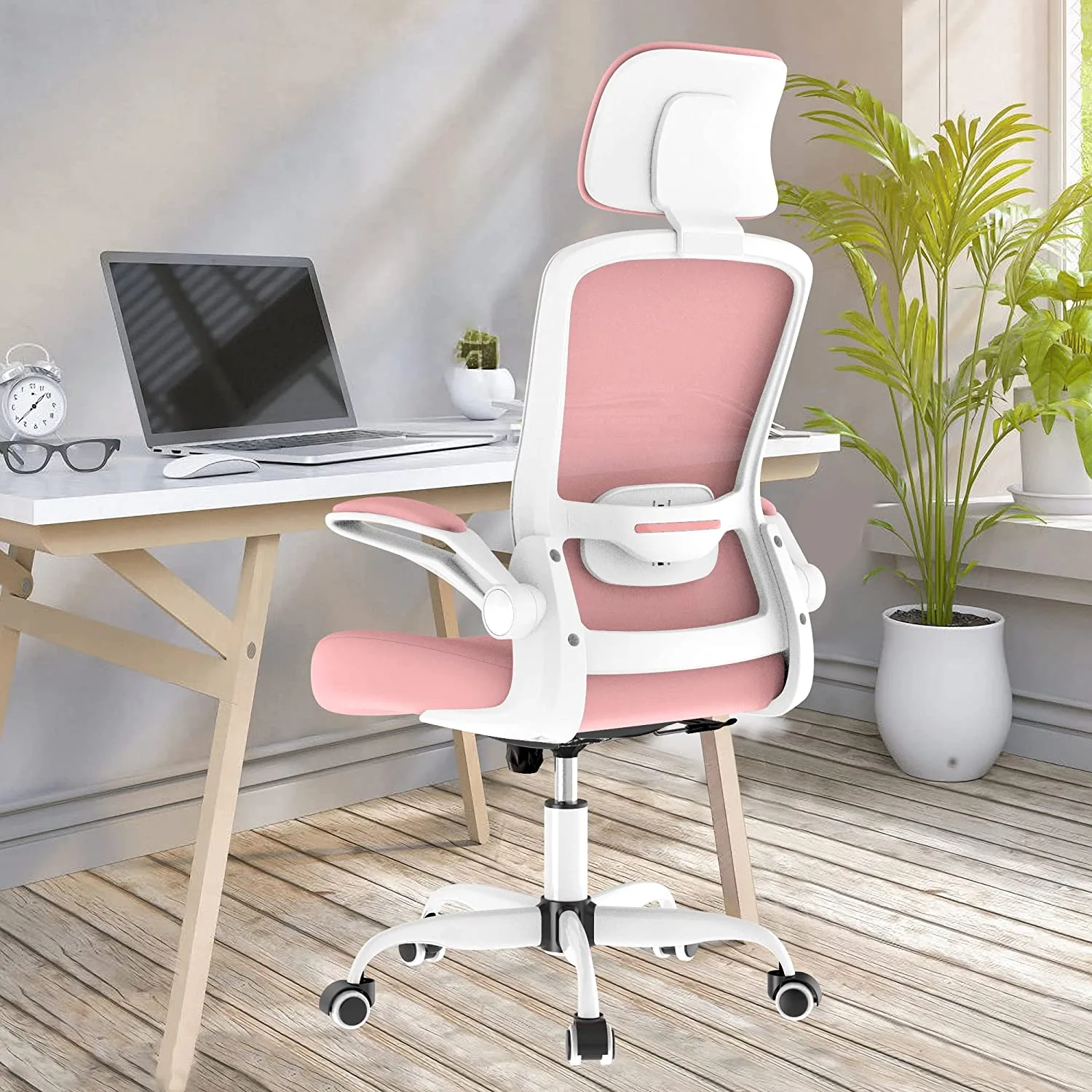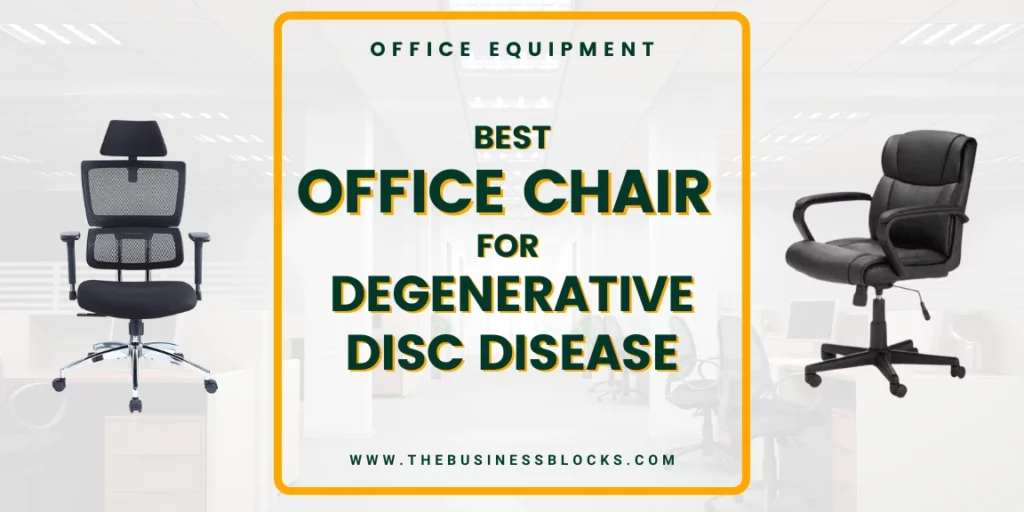Understanding Degenerative Disc Disease and Its Impact on Sitting: Best Office Chair For Degenerative Disc Disease

Degenerative disc disease (DDD) is a common condition that affects the spinal discs, the cushions that act as shock absorbers between the vertebrae. As we age, these discs naturally wear down, leading to pain, stiffness, and other symptoms. While DDD can affect anyone, prolonged sitting can exacerbate these symptoms and make daily activities more challenging.
Common Symptoms of Degenerative Disc Disease
DDD can manifest in various ways, with symptoms varying from person to person. Some common symptoms include:
- Back pain, often radiating to the legs or arms
- Neck pain, stiffness, and headaches
- Numbness, tingling, or weakness in the extremities
- Limited range of motion
- Muscle spasms
Prolonged sitting can significantly worsen these symptoms, especially back pain and stiffness. This is because sitting for extended periods can compress the spinal discs, reducing their ability to absorb shock and leading to increased pressure on the nerves.
The Impact of Sitting Posture and Chair Design
Sitting posture and chair design play a crucial role in managing DDD symptoms. Poor posture, such as slouching or leaning forward, can put undue strain on the spine, aggravating existing disc problems. Conversely, proper posture and supportive seating can help alleviate pressure on the discs and reduce pain.
- Proper posture: Maintaining an upright posture with shoulders relaxed and back straight helps distribute weight evenly and minimize strain on the spine.
- Chair support: A chair with good lumbar support, adjustable height, and a comfortable seat can provide the necessary support to maintain proper posture and minimize disc compression.
Real-Life Examples of Degenerative Disc Disease
Individuals with DDD often face challenges in their daily lives, particularly at work and home. For example, a person with DDD in their lower back might find it difficult to sit for long periods at their desk, leading to pain and discomfort. Similarly, someone with neck DDD might experience headaches and stiffness after spending time on their computer or reading.
Key Features of an Ideal Chair for Degenerative Disc Disease

Finding the right office chair can significantly impact your comfort and well-being, especially if you have degenerative disc disease (DDD). An ideal chair for DDD should provide optimal support and minimize strain on your spine, helping to manage pain and improve your overall posture.
Lumbar Support
Lumbar support is crucial for individuals with DDD. It helps to maintain the natural curvature of the lower back, reducing pressure on the discs and minimizing pain. Look for chairs with adjustable lumbar support that can be customized to fit your individual needs.
- Adjustable Lumbar Support: Allows you to fine-tune the level of support to match the curvature of your lower back. This ensures proper alignment and reduces strain on the discs.
- Lumbar Roll or Cushion: These add-ons can be used to provide additional support to the lower back, especially if the chair’s built-in lumbar support is insufficient.
Adjustable Height
Proper chair height is essential for maintaining a neutral spine position. When seated correctly, your feet should be flat on the floor, and your thighs should be parallel to the floor.
- Adjustable Seat Height: Enables you to customize the chair height to match your body dimensions, ensuring proper leg and back alignment.
- Gas Lift Mechanism: Provides smooth and easy adjustment of the seat height, allowing you to find the optimal position for comfort and support.
Armrests
Armrests play a vital role in supporting your arms and shoulders, reducing strain on your neck and upper back.
- Adjustable Armrests: Allow you to customize the height, width, and angle of the armrests to ensure proper posture and minimize discomfort. This is especially important for individuals with DDD, as it helps prevent slouching and reduces strain on the spine.
- Padded Armrests: Offer additional comfort and support, reducing pressure points and promoting relaxation.
Seat Depth
The depth of the chair seat influences your posture and leg circulation.
- Adjustable Seat Depth: Allows you to adjust the seat depth to ensure that your thighs are fully supported and your knees are bent at a 90-degree angle. This prevents pressure on the back of the knees and promotes proper blood flow.
- Seat Cushion with Waterfall Edge: Helps to reduce pressure on the thighs and improve circulation by allowing the legs to naturally angle slightly downwards. This feature is particularly beneficial for individuals with DDD who may experience numbness or tingling in their legs.
Seat Material
The material of the seat cushion plays a significant role in comfort and support.
- Breathable Material: Prevents heat and moisture buildup, promoting airflow and reducing discomfort. This is especially important for individuals with DDD who may experience increased sensitivity to temperature changes.
- High-Density Foam: Provides firm support and helps maintain the shape of the seat cushion over time. This ensures proper posture and prevents sagging, which can contribute to back pain.
Backrest
The backrest of the chair provides support for your spine and helps to maintain proper posture.
- Adjustable Backrest: Allows you to customize the angle of the backrest to suit your individual needs. This can help to reduce strain on the spine and promote comfort during extended periods of sitting.
- Contoured Backrest: Mimics the natural curve of the spine, providing optimal support and reducing pressure on the discs. This feature is particularly beneficial for individuals with DDD, as it helps to maintain proper spinal alignment.
Table Summarizing Key Features and Benefits
| Feature | Benefits for Degenerative Disc Disease |
|---|---|
| Lumbar Support (Adjustable) | Maintains the natural curvature of the lower back, reducing pressure on the discs and minimizing pain. |
| Adjustable Height | Ensures proper leg and back alignment, reducing strain on the spine and promoting comfort. |
| Armrests (Adjustable) | Supports arms and shoulders, reducing strain on the neck and upper back, and preventing slouching. |
| Seat Depth (Adjustable) | Provides full thigh support and promotes proper blood flow, preventing pressure on the back of the knees and reducing numbness or tingling. |
| Seat Material (Breathable and High-Density Foam) | Promotes airflow and reduces discomfort, while providing firm support and maintaining proper posture. |
| Backrest (Adjustable and Contoured) | Customizes the angle for individual needs, mimics the natural curve of the spine, and provides optimal support, reducing strain and promoting comfort. |
Popular Office Chair Options for Degenerative Disc Disease

Finding the right office chair can be a significant challenge, especially for individuals with degenerative disc disease (DDD). The right chair can provide crucial support and comfort, minimizing pain and discomfort while promoting proper posture. This section will delve into some of the most popular and highly-rated office chairs designed to address the specific needs of individuals with DDD.
Ergonomic Office Chairs with Adjustable Features
Ergonomic office chairs are designed to promote proper posture and minimize strain on the spine. They often feature a wide range of adjustable components, allowing users to customize the chair to fit their individual needs. These features can be particularly beneficial for individuals with DDD, as they can help to reduce pressure on the spine and promote proper alignment.
Here are some of the most notable features of ergonomic office chairs for DDD:
- Adjustable lumbar support: This feature allows users to customize the level of support for their lower back, ensuring proper spinal alignment and reducing pressure on the discs.
- Adjustable seat height: This feature ensures that the user’s feet are flat on the floor and their thighs are parallel to the floor, reducing strain on the hips and lower back.
- Adjustable armrests: This feature allows users to customize the height and angle of the armrests, ensuring proper posture and reducing strain on the shoulders and neck.
- Adjustable backrest: This feature allows users to adjust the angle of the backrest, promoting proper posture and reducing pressure on the spine.
- Breathable materials: Breathable materials, such as mesh or fabric, help to keep the user cool and comfortable, especially during long periods of sitting.
Popular Ergonomic Office Chair Options, Best office chair for degenerative disc disease
- Herman Miller Aeron Chair: The Herman Miller Aeron Chair is a classic ergonomic office chair known for its exceptional comfort and adjustability. Its unique design features a mesh backrest and seat, promoting breathability and airflow. The Aeron Chair also offers a wide range of adjustable features, including lumbar support, seat height, and armrests, allowing users to customize the chair to fit their individual needs.
- Steelcase Leap Chair: The Steelcase Leap Chair is another highly-rated ergonomic office chair that offers a wide range of adjustable features, including lumbar support, seat height, and armrests. Its design features a flexible backrest that conforms to the user’s back, providing personalized support and reducing pressure on the spine. The Leap Chair is also known for its durable construction and long-lasting performance.
- Haworth Zody Chair: The Haworth Zody Chair is a popular ergonomic office chair designed for comfort and support. It features a unique “LiveBack” technology that provides dynamic support for the user’s back, adjusting to their movements and providing personalized comfort. The Zody Chair also offers a wide range of adjustable features, including lumbar support, seat height, and armrests, allowing users to customize the chair to fit their individual needs.
- Humanscale Freedom Chair: The Humanscale Freedom Chair is a unique ergonomic office chair designed to promote natural movement and support. Its design features a weight-sensitive mechanism that adjusts the chair’s support based on the user’s weight and movements, ensuring proper posture and reducing pressure on the spine. The Freedom Chair also offers a wide range of adjustable features, including lumbar support, seat height, and armrests, allowing users to customize the chair to fit their individual needs.
Finding the best office chair for degenerative disc disease can feel like a daunting task, but remember, you deserve comfort and support. Reclining desk chairs are often a great option, as they allow you to adjust your posture and relieve pressure on your spine.
For a comprehensive guide to the essential features of reclining desk chairs, check out this helpful resource on reclining desk chair staples. With the right chair, you can find the perfect balance of comfort and support, allowing you to focus on your work and well-being.
Finding the best office chair for degenerative disc disease can be a journey, but it’s a journey worth taking. Remember, comfort and support are key to managing pain and promoting healing. You might want to consider the homall gaming office desk chair for its ergonomic design and adjustable features, which can be helpful in providing customized support.
Ultimately, the best chair for you is the one that allows you to sit comfortably and confidently throughout your day.
